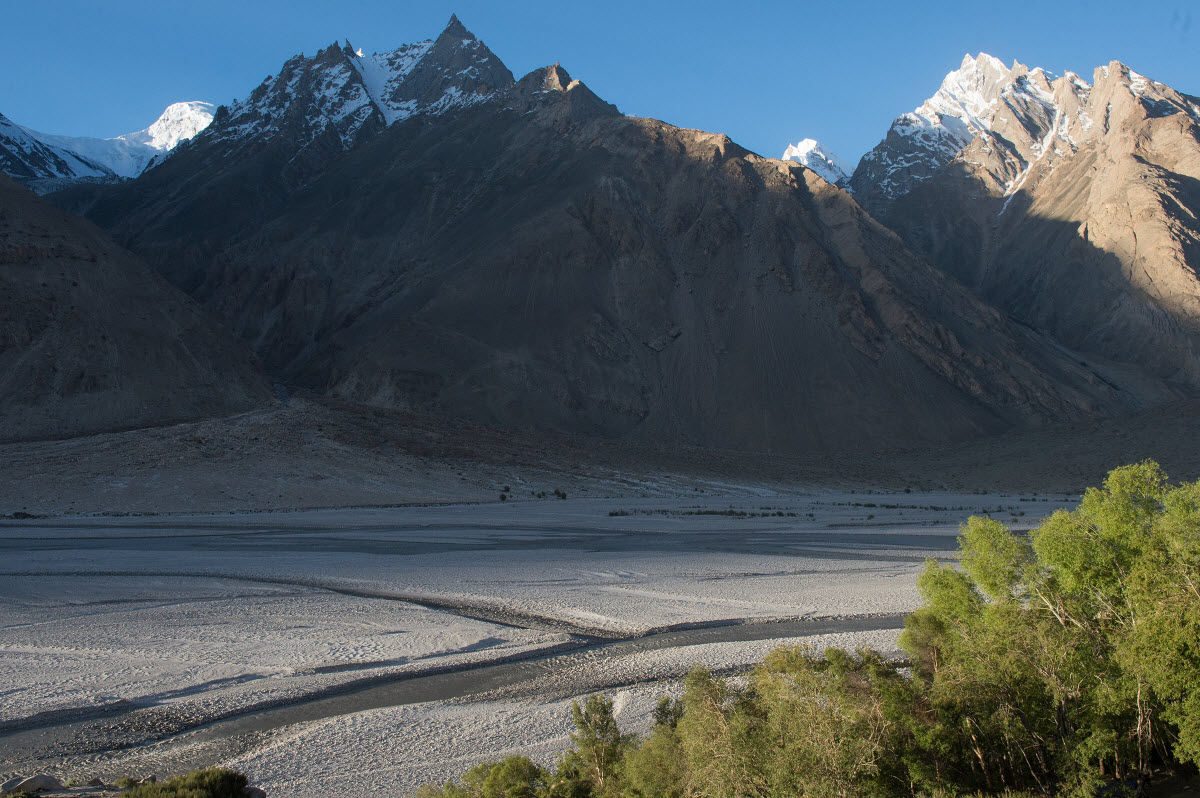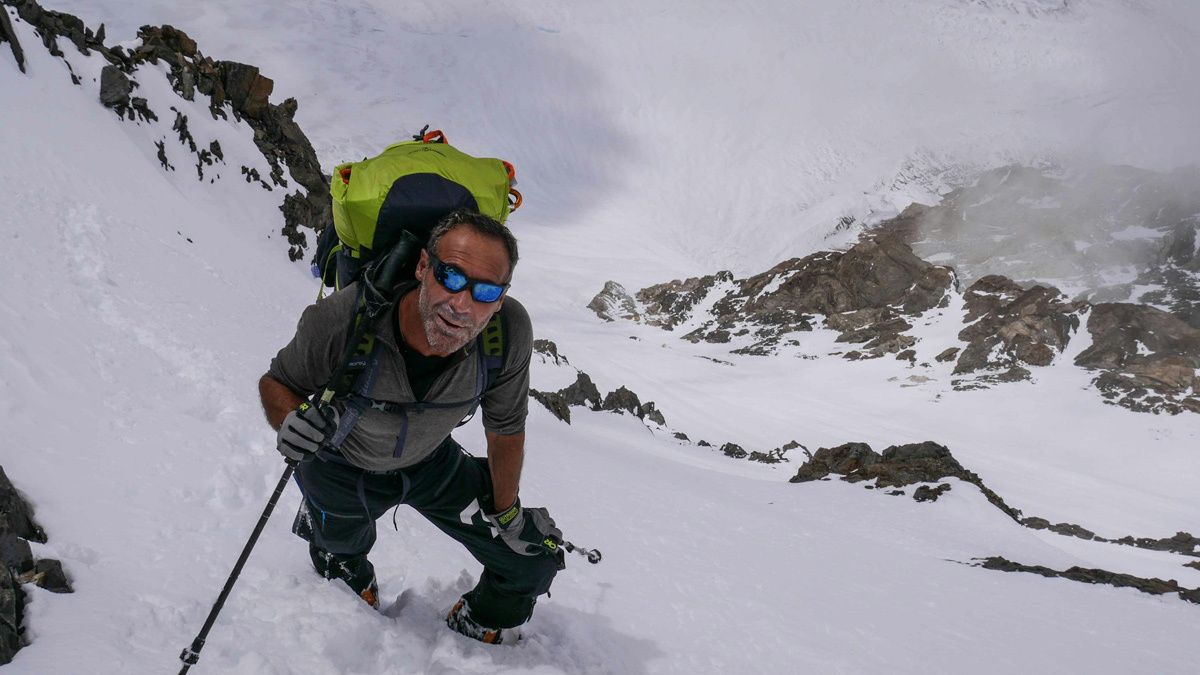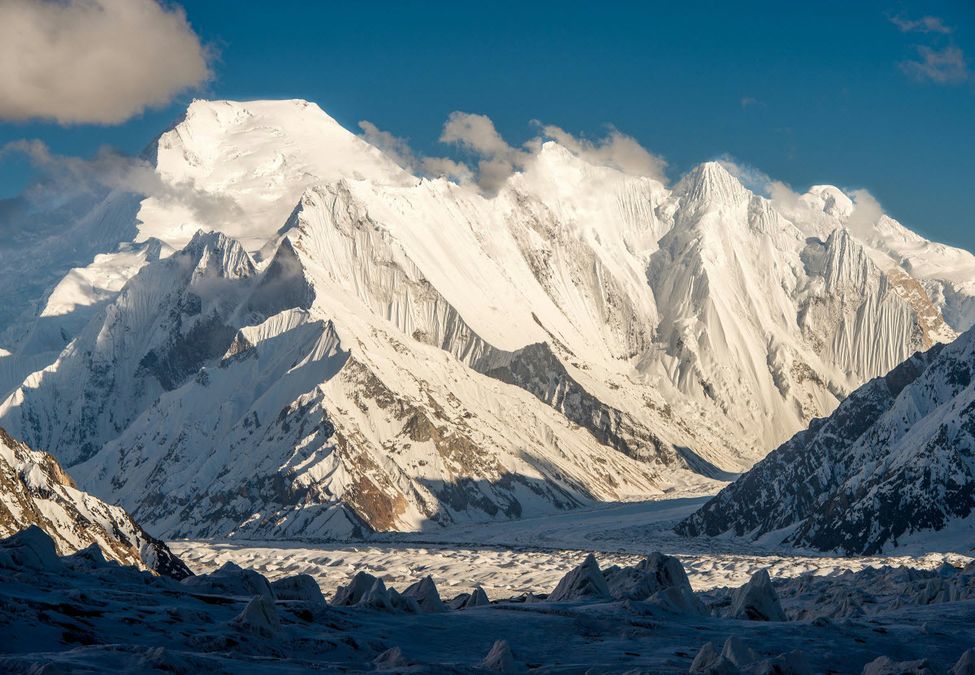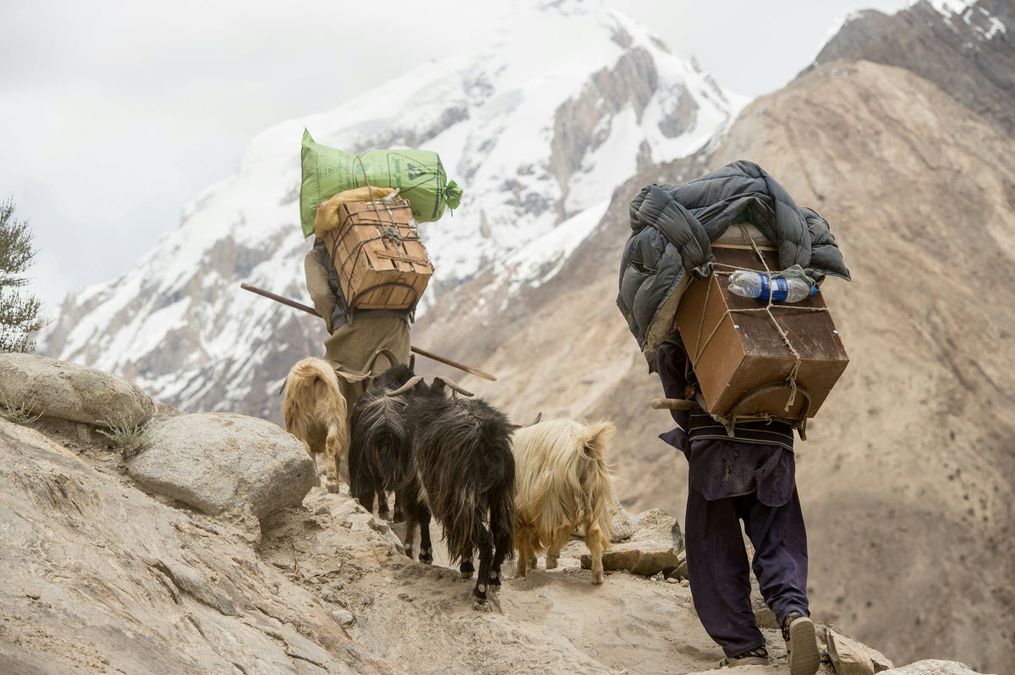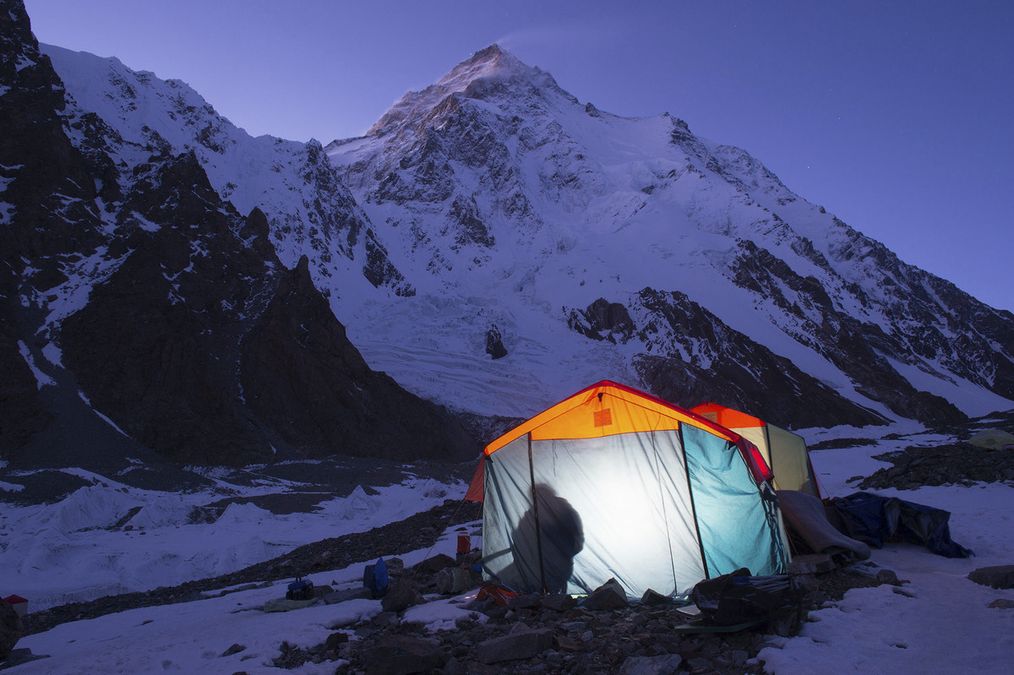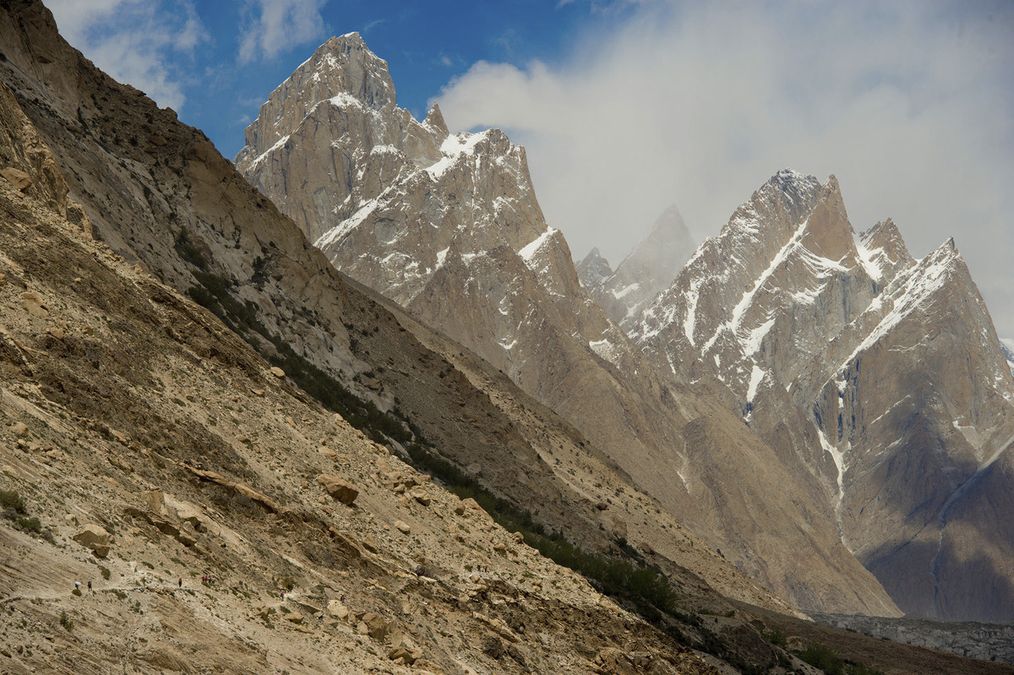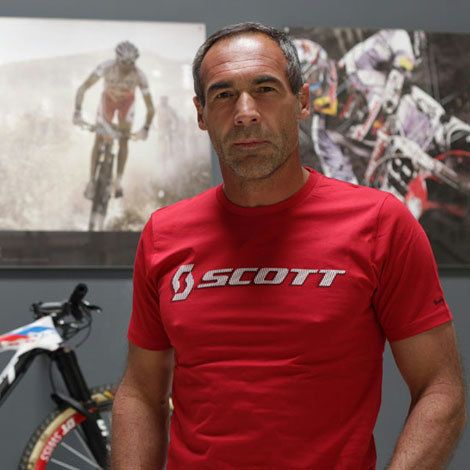MIKE HORN K2 Expedition - Part 2
In May 2015, Mike Horn and his team left Switzerland with the goal of climbing the most difficult summit in the world, also known as The Mountain of Mountains, K2.
Mike learnt that it’s the mountain which decides if you get to the top or not. Hear the dangers he faced in the pursuit to reach the summit.
After returning from his expedition, Mike payed us a visit at our headquarters to let us in on his adventure.
In case you missed part 1, where Mike talks about the insane task of driving from Switzerland to Pakistan. Click here.
Did you manage to ski during the trip? How was it?
We did manage to ski and it was really amazing because K2 had a lot of snow in the beginning and then once it started avalanching the conditions just turned unskiable. We arrived quite early on K2, so we managed to take the skis quite high up close to Camp 2 (6400 meters) and did some amazing skiing in some really steep sections. K2 is a mountain that you can ski from top to bottom and I think this is still maybe an idea that will stay in my mind, with the experience that I had with the shoes that SCOTT specially made for this expedition.
My biggest worry was if my feet were going to stay warm enough in the ski boots but now that I know that they will, I'll be climb with a lot more freedom. The skis that I used (SCOTT Superguide 88), even going through different terrain and snow conditions, were really adapted for the mountain and it’s a ski that I definitely would take again.
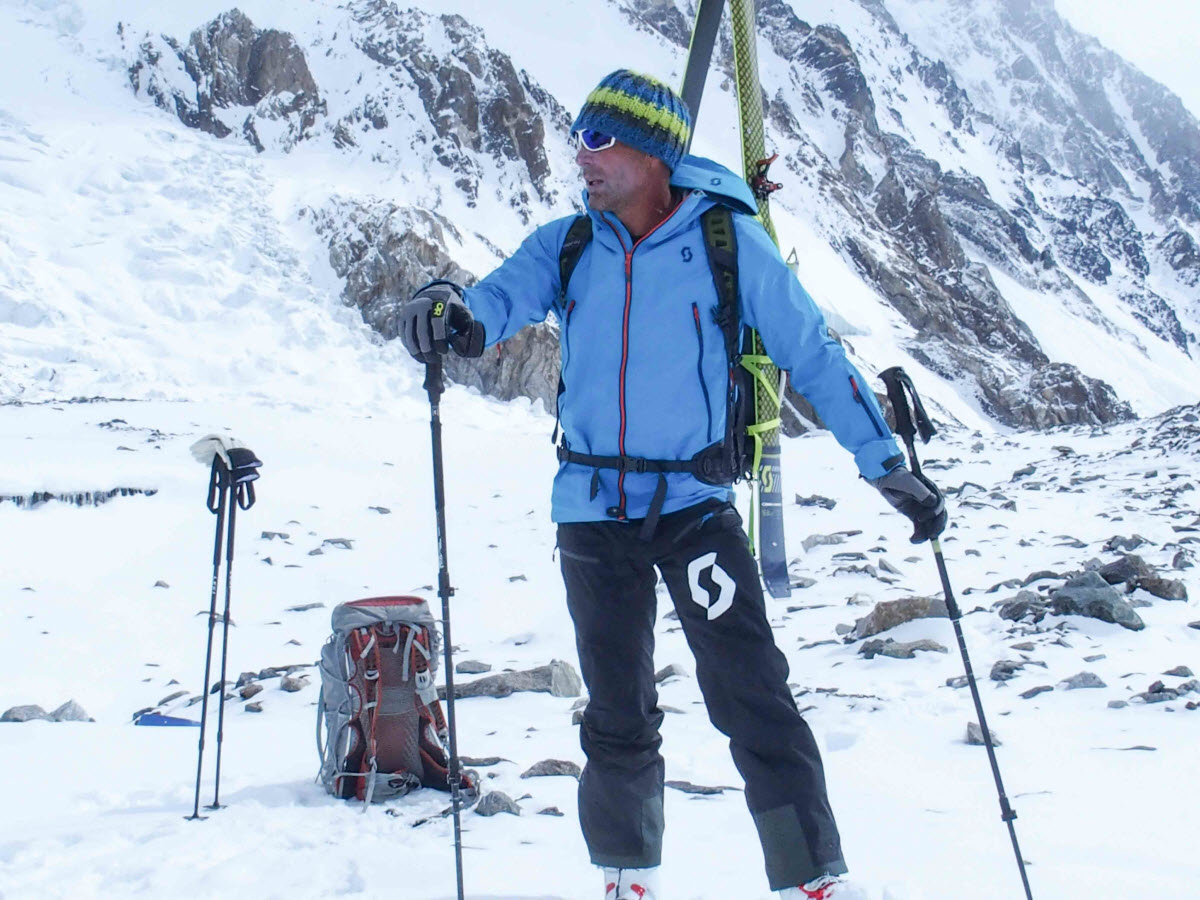
You use a lot of our products on your expedition, How were they?
You know, the products that SCOTT had given me to use were some of the best equipment that I have used as a mountaineer (garments, gloves, skis, boots, poles). As my mountaineering career has been about 10 years, I have used a couple of different brands and I think I’ve got something that suits my needs now. The garments are good for up to 7000-7500 meters and when you go above these altitudes, you enter the death zone and this is where you need mountaineering specific down suit.

We are pleased to see you are in good shape; unfortunately you didn’t get to the K2 summit this time around. What do you think was the biggest obstacle preventing you from getting to the summit?
This year was a very special year on K2, it wasn’t cold at all. It was quite hot and warm in Karachi; they had a heat wave where 800 people died. That heat actually flows up to the Himalayas, then condensation starts and snow starts falling. They had a winter with not a lot of snow and this summer the snow never really stopped falling. Massive avalanches went down and that was due to very strong winds bringing all that snow in and just pasting it on the mountain.
On one day four huge avalanches came down the Season route, which we were climbing. That made the climb very dangerous. It was never long and cold enough for the snow to settle, so all the snow was waiting to avalanche above the bottleneck and on the summit ridge. Our biggest problem was not to climb to 8000 meters, that we could have done in very thick snow. The problem was to get from 8000 meters to 8600 meters, where there are a lot of avalanche dangers. In addition to that, parts of the expedition had very strong winds that lasted for quite long periods of time.

After you made the decision to come back to Switzerland, Did you drive back with all the cars and equipment?
During the expedition, we did not know when it would end and whether we would get to the summit or not, so it was very difficult to coordinate the trip back to Switzerland with all the visas needed. So the cars were put on cargo, as well as the equipment and we sent them back via ship to Geneva. For me it was a little disappointing. It was such a beautiful drive through some of the most amazing landscapes, and we met so many nice people on our way here that it was sad that we could not meet them again on our way back.
I think next time if it’s possible, I would definitely do the drive there and back because it is like a soft ending to your expedition. After you’ve been up in the mountains, you don’t really feel like getting into an airplane and flying over these nice places and get to Switzerland in one day. You really feel like you would like to wind down a little bit slower, but obviously time is important and we’ve got new projects to do and that’s why I had to get back to Switzerland as soon as possible.

How did you manage to provide amazing content from all the way on the other side of the world in Pakistan?
You know, I’ve been exploring for 25 years and I’ve made many mistakes which I have learned from. This allows me today to be able to supply amazing content with the use of 4K cameras. It makes it so much easier to be able to film at such a high quality with a small camera. The 4K cameras allow us to zoom into the image and have the quality still good. It’s like you have two cameras, one that gives you the wider picture and then if you zoom into the picture you can get the close ups. This is how we worked because we were a very small team. It’s basically us that created the edits.
I took a German friend of mine with us, he’s amazingly artistic. I took a photographer that did the Pangea expedition with me around the world which lasted for 5 years. He came along and took photos. Obviously once you leave the base camp that is where the filming and the photos become our responsibility. To be able to show what you are experiencing to other people that maybe do not have the same opportunity as you becomes very important.
You have to be able to make an effort to film, you must be able to make an effort to take a photo, and sometimes it’s easier to say “nah I’m too tired I don’t want to take a photo”. If you start thinking like that, you cannot supply amazing content because you miss the great moments. For us, when we see how many people follow us, it motivates us on the expedition to increase the quality of our content and to send so much more compared to just sending it back home, only for our family to watch. If you know 22 million people are following your expedition, then you really want to give them the good stuff to see.

The person who was doing the editing, was he with you at base camp?
The person editing the video was editing sometimes at the back of the car. He came up to base camp with us, I would be filming and he would be editing. Then I would be editing some of the time lapses and give it to him, we would work together as a team cause one person cannot cover all the bases. It becomes very important to get the feeling of who you are working with and what message you want to share with the rest of the world.
That’s why it was very important that you find somebody that’s more friend than creative because if he’s a friend, you’ll know that you’ll be able to overlap content and images because you know the way he works or his style of working and what he wants to show to the rest of the world. So that made this expedition so easy to create content because we had the same ideas and if we have the same ideas, that’s when you can really put out amazing stuff.
It’s a full time job doing the editing, you cannot just take a climber or an adventurer to base camp to film and edit movies. You have to take an artist and that’s what we did differently this year, we took an artist and not just another climber filmmaker.
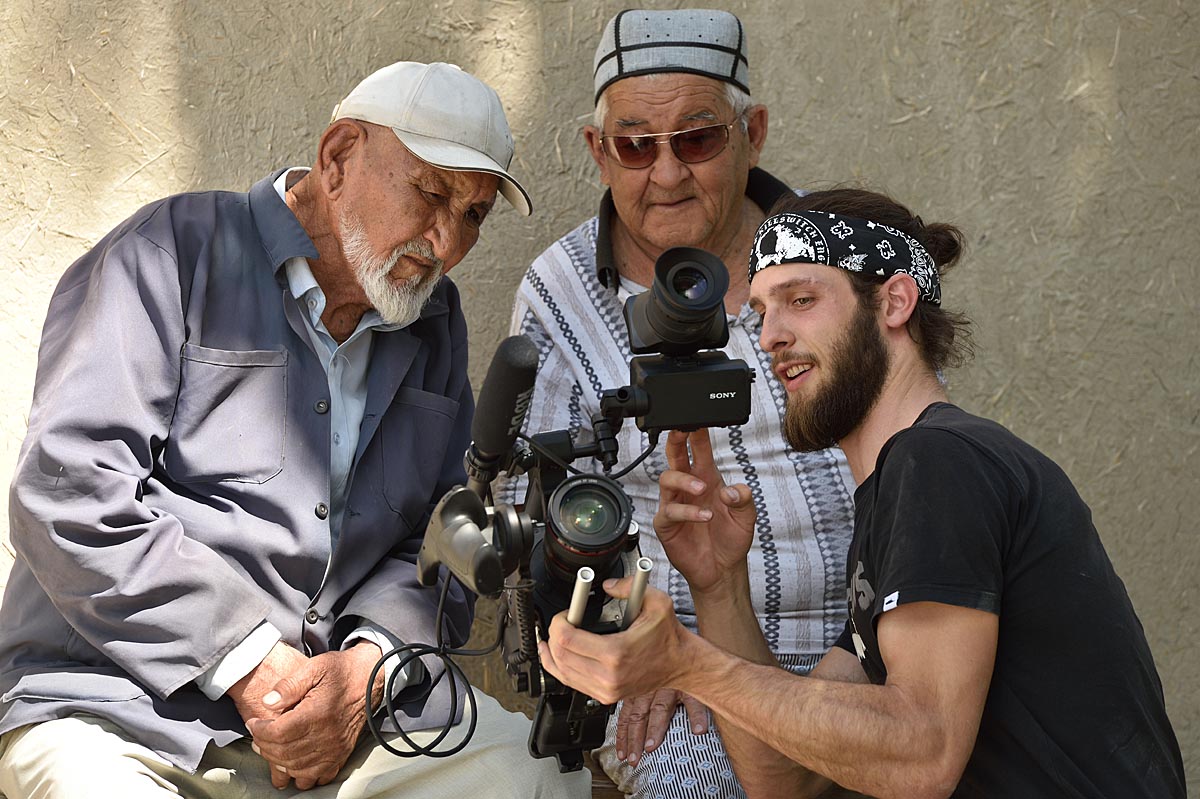
Do you plan to go back to K2 sometime in the future?
You know, K2 is the mountain of mountains, so definitely it will be a future project of mine. Maybe I’ll do something different in between before I go back to K2, maybe I’ll do another 8000 meter peak just so that I can get that rhythm and that positiveness back again into my system. In 2013, we went to K2 and we had to turn back as well. In 2014, we went to Makalu and managed to reach the summit. In 2015, we went back to K2 and tried for the summit again but in the end it didn’t work out. So I think maybe if I can find the budget now, a winter expedition to Nanga Parbat in December would be interesting. It is still one of the 8000 meter peaks that was never climbed during winter. So maybe Nanga Parbat for a winter expedition and then back to K2 next year. In an ideal world, this is what I would hope for, but these expeditions cost a little bit of money and it’s not always easy to get the finance.
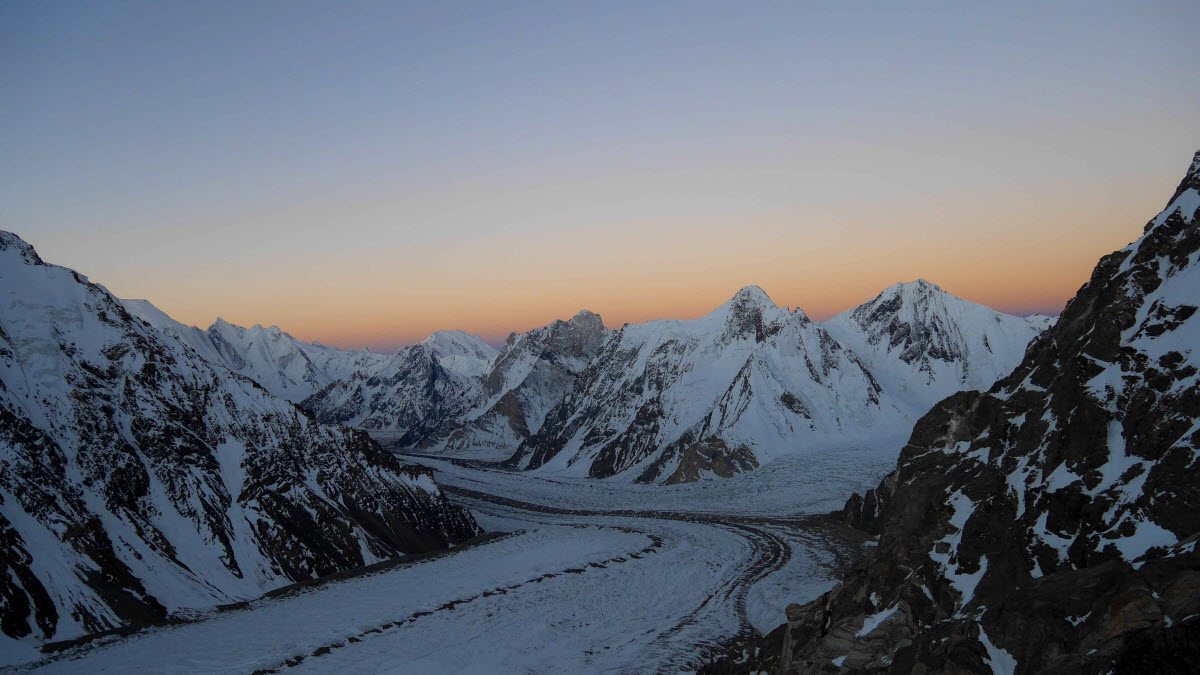
You are back in Switzerland now, what’s next for you?
I have another season of “The Island”, the TV series that I did with M6 where I trained 13 volunteers in survival techniques. I then left them on an island to survive for 30 days. That program worked really well. It’s not a program that’s considered as reality TV because you can’t win anything. It’s just to see if you, as a human being, can survive on an island with 12 other guys that you don’t actually know in the beginning.
We have two series happening. For the first time, I’ve selected 15 women as well that will go to one island and try to survive. On an other island about 10 miles away will be 15 men trying to survive, so that is the first project I have for November. Then I have the Pole to Pole Project which is still in the planning stage and that project will most probably start in January next year. That will probably take me away for just over one and half years.
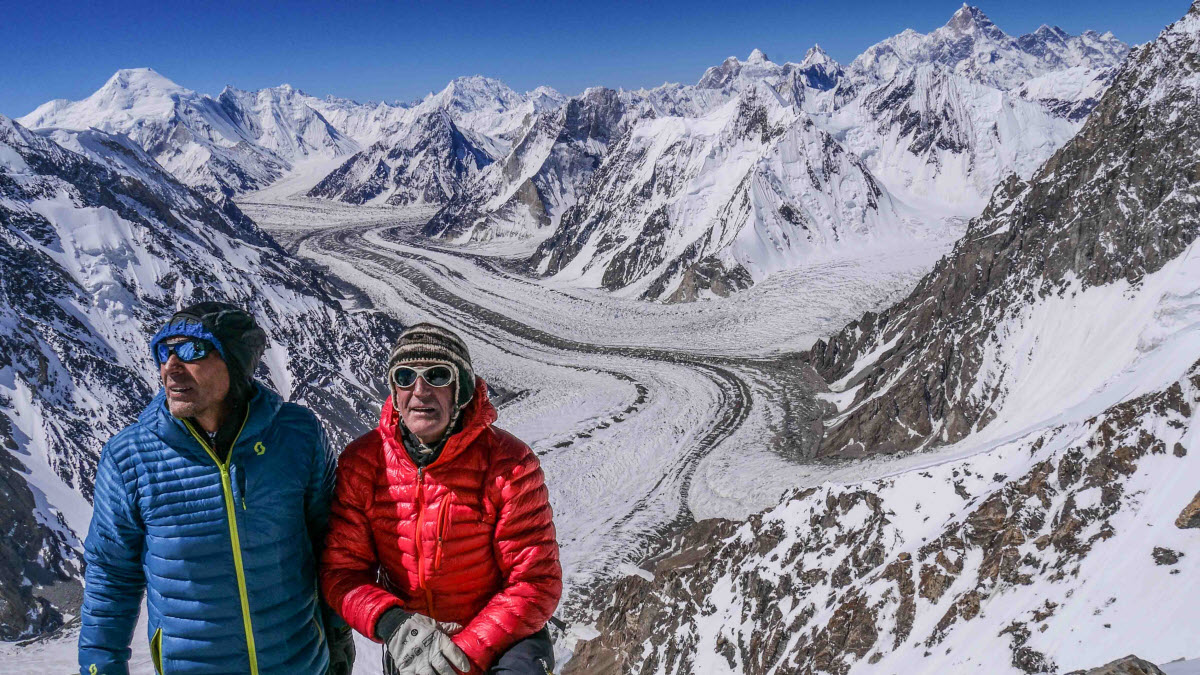
Can you explain a little about the Pole to Pole Project?
The Pole to Pole Project is the circumnavigation of the world via the North and South Pole, a little bit like what I did in Latitude Zero on the equator but the other way. So I will stop on the Skeleton Coast and at the Okavango swamps to do an expedition. Then I will do an expedition with the sharks in the shark alley in South Africa and afterwards I will sail down to Antarctica and do a full crossing of it. The boat will then pick me up on the other side and I will sail through New Zealand, Australia and Japan.
On all these places, I will do an expedition. The boat will then drop me off at the Arctic, I will try go on foot from where I was dropped off over the North Pole and down to the southern point of Greenland. So it’s a full circumnavigation of the world via the two Poles and introducing yet again different elements, such as the dessert, the jungle, the ocean, the tundra and volcanoes.
